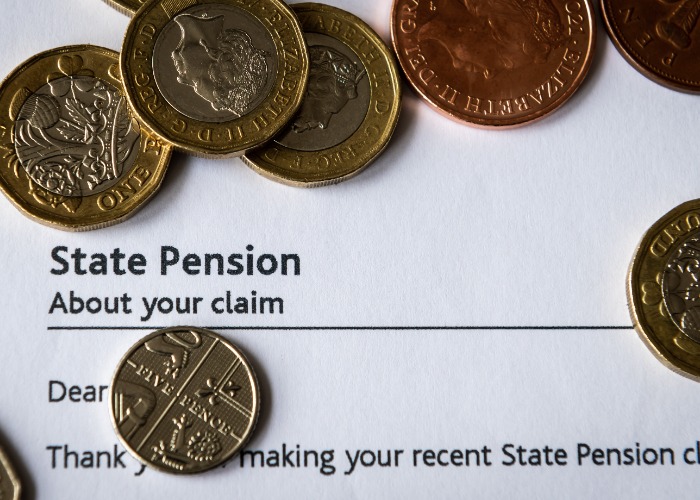Huge differences in State Pension income revealed

With figures revealing that some State Pensioners are receiving up to £1,000 a week while others are getting just 10p, we look at the reasons behind this alarming disparity.
A small group of retirees are receiving more than four times the full New State Pension, according to research from The Telegraph.
Although the most pensioners can typically receive under the New State Pension is £11,502 for the 2024/5 tax year, some older retirees are pocketing between £46,800 and £52,000 annually.
Admittedly, these cases are extremely rare, with just six pensioners receiving an annual income of £52,000.
At the other end of the scale, approximately 1,100 pensioners qualify for just 10p or less per week.
How is this possible?
Don’t make a costly mistake with your pension pot
A two-tier system
This disparity is rooted in Britain’s extremely complex pension system, which is divided into ‘Old’ and ‘New’ systems.
The Old State Pension system, which covers those who reached State Pension age before April 2016, is made up of two parts.
The Basic element is determined by a person’s National Insurance contributions, while the Additional State Pension (formerly known as SERPs) is largely based on in-work earnings.
Eligibility for the New State Pension (and the amount of these payments) is based solely on a person’s National Insurance record.
According to The Telegraph’s figures, there are approximately 9.3 million people on the Old system and about 3.4 million on the New system.
Why you can’t rely on the State Pension
How the numbers stack up
Under the Old system, the Basic element entitles retirees to £169.50 per week in the current tax year, which equates to an annual income of £8,798.
This figure is almost £3,000 less than the full New State Pension entitlement of £11,502.
Not surprisingly, this has led critics of the Old system to argue that it condemns many pensioners to poverty.
However, there is another side to the coin for some retirees paid on the Old system.
Thanks to extra payments earned through the SERPS component, qualifying retirees can top up their pension by up to £218.39 per week.
These additional payments are intended to reflect a person’s increased contributions into the system during their working life.
4 little-known tricks to get more from your pension
The benefits of deferral
Furthermore, the Old system also allowed pensioners to increase their retirement payments by delaying the date at which they started to receive their State Pension.
Under these rules, retirees could boost their starting payments by 10.4% (equal to £40.30) for every year they deferred.
According to The Telegraph’s data, delaying the State Pension by 13 years could have boosted a retiree’s weekly income to more than £900.
Note that the deferral uplift has since fallen to 5.8% per year.
How wide is the pensions gap?
As part of its analysis, The Telegraph looked into the number of pre-2016 retirees receiving certain amounts.
Here is what the analysis found.
|
Amount (per week) |
Number of people |
|
Up to £100 |
1,364,874 |
|
£100 to £200 |
4,309,055 |
|
£200 to £300 |
3,258,255 |
|
£300 to £400 |
342,889 |
|
£400 to £500 |
9,016 |
|
£500 to £600 |
1,473 |
|
£600 to £700 |
283 |
|
£700 to £800 |
71 |
|
£800 to £900 |
6 |
|
£900 to £1,000 |
6 |
Source: The Telegraph/DWP
As you can see from the table above, there are far more pensioners at the lower end of the spectrum than receiving the most generous payments.
Why are some receiving so little?
Pensioners receiving the very lowest payouts will likely not have qualified for the Basic State Pension.
Instead, they will receive ‘graduated retirement benefit’ – a form of Additional State Pension that ran between 1961 and 1975.
Women were among the biggest losers under the Old system, which requires retirees to have at least 30 years National Insurance contributions to claim the full amount.
Many women, having spent fewer years in paid work than men, did not accrue additional benefits through earnings-linked SERPS.
In fact, more than 230,000 women who were short-changed on the Old State Pension system are now entitled to rebates totalling £1.5 billion.
Pensioners on a low income may also qualify for additional support through the Pension Credit scheme, which tops up weekly income to £218.15 for single people and £332.95 for couples.
9 ways to protect your pension from the taxman
Have your say
We’d love to hear your thoughts on this analysis.
Do you believe that those who paid more into the system should receive a higher pension in their later years? Or perhaps you’re outraged by the pittance that some pensioners survive on.
Maybe you believe the current system is a shambles and needs a total overhaul.
Let us know in the comments below.
Most Recent
Comments
Be the first to comment
Do you want to comment on this article? You need to be signed in for this feature







